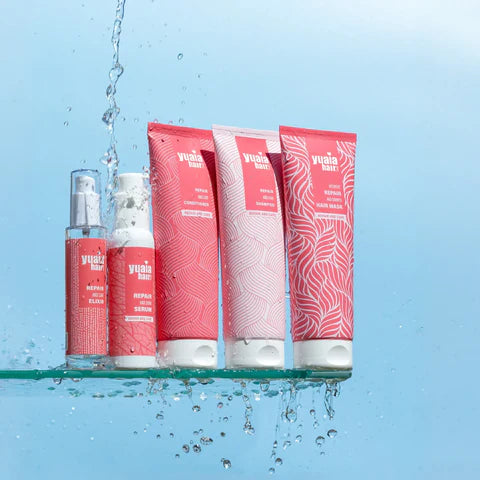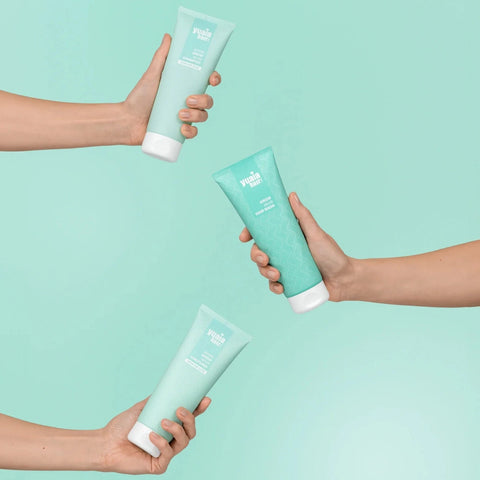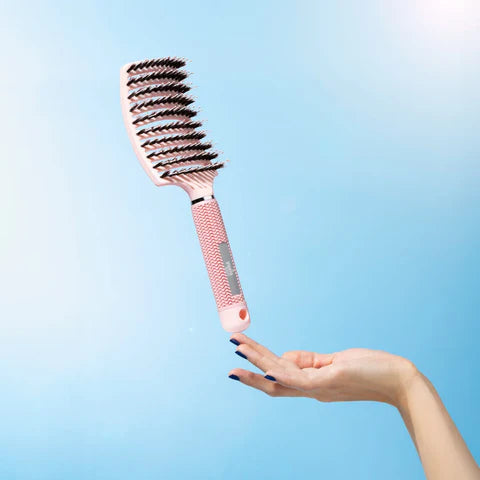
Identifying low porosity hair: At-home tests
Understanding your hair's porosity can help tailor your hair care routine to its specific needs. For those unsure about their hair porosity, simple at-home tests can provide clarity. The float test is a popular method: take a clean strand of hair and place it in a glass of water. If the hair floats, it indicates low porosity, as the tightly packed cuticles resist water absorption. Another method is the spray test, where a mist of water is sprayed onto the hair. If water beads up on the surface, this suggests low porosity due to the cuticle's flat structure.
Optimizing hair care for low porosity hair
Low porosity hair benefits from lightweight, water-based products that can penetrate the compact cuticle layer. Heavy oils and butters may sit on the surface, leading to buildup. Instead, opt for sulfate-free shampoos that gently cleanse without stripping moisture. Our Grow and Glow Shampoo is designed to maintain healthy hair by cleansing while preserving natural oils.
Brushing techniques for low porosity hair
Proper brushing is essential for maintaining healthy low porosity hair. Using the right brush can prevent breakage and promote shine. The Curvy Brush is ideal for gently detangling while distributing natural oils, enhancing the hair's natural luster. This brush's boar bristles are gentle on the hair, reducing friction and breakage.
Choosing the right products for low porosity hair
Selecting products specifically designed for low porosity hair can significantly improve hair health. Lightweight conditioners and leave-in treatments that offer moisture without weighing hair down are ideal. For those with curly low porosity hair, our Twirl and Curl curly cream can enhance curl definition while maintaining moisture balance.
Understanding product buildup in low porosity hair
One of the common challenges faced by those with low porosity hair is product buildup. This occurs when hair products do not penetrate the hair shaft and instead accumulate on the surface. The tightly packed cuticles of low porosity hair make it difficult for oils, creams, and other products to be absorbed, often resulting in a greasy or weighed-down appearance. To combat this, it's important to use lightweight, water-based products that are more easily absorbed. Regular cleansing with a gentle, sulfate-free shampoo can also help remove buildup without stripping the hair of its natural oils.
The impact of humidity on low porosity hair
Humidity can have a unique effect on low porosity hair. While high humidity often leads to frizz in other hair types, low porosity hair may not experience the same level of frizz due to the cuticle's resistance to moisture. However, this resistance can also prevent beneficial moisture from entering the hair shaft, leaving the hair feeling dry and brittle. To counteract this, using a heat protectant like our Style and Shine Heat Protection can help lock in moisture and protect the hair from environmental stressors.
Using heat to enhance moisture absorption
Applying gentle heat can be beneficial for low porosity hair as it helps to slightly lift the cuticles, allowing for better absorption of moisture and products. This can be achieved through techniques such as warm water rinses or the use of a heated cap during deep conditioning treatments. It's important to use heat sparingly and at low temperatures to prevent damage. Incorporating heat in a controlled manner can enhance the effectiveness of your hair care routine, ensuring that your hair receives the nourishment it needs.
Frequently asked questions
Can low porosity hair become high porosity?
Low porosity hair cannot naturally become high porosity, but damage from heat or chemical treatments can increase porosity by lifting the cuticle. Maintaining healthy hair practices can help preserve your hair's natural porosity.
Is low porosity hair difficult to style?
Low porosity hair can present styling challenges due to its resistance to absorbing products. Using lightweight, water-based styling products and applying heat to open the cuticles can improve manageability and styling results.
What are the best practices for moisturizing low porosity hair?
To effectively moisturize low porosity hair, use lightweight, water-based products and apply heat to help open the cuticles for better absorption. Regular deep conditioning treatments can also enhance moisture retention.
 2-5 päivän toimitus
2-5 päivän toimitus
 25 000+ tyytyväistä asiakasta
25 000+ tyytyväistä asiakasta
 Tyytyväisyystakuu
Tyytyväisyystakuu











